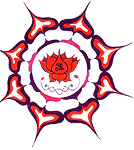
OSTEOPATHIC MEDICINE – Hands on Caring
by Rick Clofine, D.O.
On an almost daily basis a patient will inquire about the initials at the end of my name, D.O. as opposed to M.D. This may occur on the first visit, but often times will not come up till later in our relationship. They know they are seeing a board certified Obstetrician/Gynecologist, so what's up? What's the difference?
Osteopathic Medicine and Osteopathic Physicians have been a part of American Medicine since 1874. That is the year Andrew Taylor Still first espoused the philosophy and science of Osteopathic Medicine. Dr. Still was a former civil war physician and surgeon who was dissatisfied with the ineffectiveness of nineteenth-century medicine. Dr. Still developed an appreciation for the bodies ability to heal itself. Through intense study he came to understand the great importance of the musculoskeletal system, and its intimate relationship to all organ systems in the body, and to overall good health. He stressed preventative medicine, eating properly and keeping fit. He identified palpation and human touch as vital to gaining patient confidence and providing effective medical care. He introduced a system of manipulation as a noninvasive form of diagnosis and therapy. While originally a drugless school of medicine (due to the dangerous drugs of the day), as prescription of medication became a science, it was accepted by the profession.
Today, Osteopathic Medicine in the United States is fueled by 17 fully accredited osteopathic medical schools graduating about 1800 physicians annually. Approximately 38,000 Osteopathic Physicians (about 6% of the nations physicians) are licensed with FULL MEDICAL PRACTICE PRIVILEDGES in every state. Osteopathic postgraduate specialty training is available in 62 specialty and subspecialty areas of medicine. As opposed to in the past, today there are few institutions (hospitals or medical schools) that are composed of purely osteopathic or allopathic (MD) physicians. Almost all metropolitan hospitals are mixed staff; there are M.D.’s teaching at D.O. medical schools and vice versa.
Osteopathic medical education is very similar to M.D. training; an undergraduate degree followed by four years of medical school followed by post graduate training. There are several distinct differences in the training. Osteopathic training is oriented toward primary care medicine (family medicine, internal medicine, pediatrics and obstetrics/gynecology) with around 75% of Osteopathic Physicians practicing in primary care areas. Osteopathic Manipulative Therapy (OMT) is taught as part of the medical school curriculum. Osteopathic physicians are trained in hands on musculoskeletal diagnosis and manipulative therapy. While not all D.O.’s choose to utilize this training , all have had this exposure and are thus generally knowledgeable about the concepts involved and will refer for Osteopathic manipulation when indicated.
Osteopathic Manipulative Therapy is a complete method of diagnosis and therapy based on a unique appraisal of the structure and function of the body. Osteopathic Medicine emphasizes that all body systems, including the muskuloskeletal system, operate in unison, and disturbances in one system can alter the function of other systems. OMT evaluates and treats the entire structure and function of the body, not just the bones, muscles and joints!
The knowledge of the bodies own inherent drive to heal is optimized through hands on treatment that maximizes the balanced well being of the structure. OMT is designed to support, stimulate and, in some instances, initiate the body’s trend toward health. When the bodies musculoskeletal structure is altered, abnormalities can occur in internal body systems. And, vice versa, when internal organ system dysfunction occurs, it is reflected in the musculoskeletal system. This knowledge is useful in both diagnosis and treatment.
So in practical terms, as an osteopathic physician, how do I treat my patients differently?? When I see patients in pregnancy I recommend manipulative therapy to help avoid the typical postural discomfort of pregnancy. When the aches and pains of advancing pregnancy exist, OMT is a safe and effective way of providing relief. I feel there is benefit to manipulative therapy before and after surgical procedures. Prior to surgery it helps optimize the system to deal with the upcoming stress. It is very common to have back and neck pain post operatively due to positioning on the operating room table in association with complete muscle relaxation. This responds very well to OMT. I have found OMT to be helpful in treating menstrual cramping and PMS. In cases of chronic pelvic pain it helps resolve musculoskeletal involvement ,thus making the evaluation less confusing, and sometimes avoiding surgery.
Osteopathic Medicine provides a needed alternative to the mainstream of conventional western medicine. It provides all the security and benefit of high-tech medicine implemented from a perspective that respects the bodies innate healing ability. Over the last 100 hundred years it has kept abreast of our rapidly advancing medical knowledge without discarding time proven hands on therapy.
Reference:
Osteopathic Medicine: A Distinctive Branch of Mainstream Medical Care (pamphlet)
American Academy of Osteopathy
3500 DePauw Boulevard, Suite 1080
Indianapolis, Indiana 46268-1136

![]()
Home ![]() Intro
Intro ![]() Medicine Pages
Medicine Pages ![]() Moontime & Menopause Medicine Wheel
Moontime & Menopause Medicine Wheel
Ritual & Ceremony ![]() Temple of Health Radio Show
Temple of Health Radio Show ![]() Links & References
Links & References
![]() Events
Events ![]() Divine
Light Farms
Divine
Light Farms ![]()

